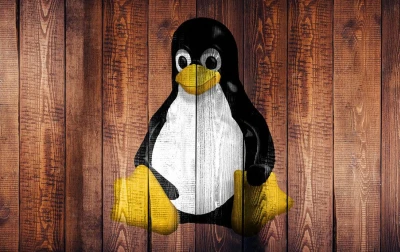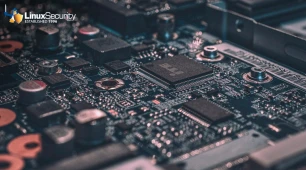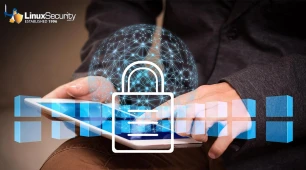
Linux Kernel v6.12 marks a historic event in its 22-year history as it continues to meet the needs of developers, businesses, and end-users alike. Of particular note is its inclusion of long-awaited real-time "PREEMPT_RT" support - something developers had been working towards for two decades prior - in its mainline kernel version. This marks an important step toward improving real-time application performance by making kernel processes preemptible and improving real-time application performance overall.
Real-time Linux is essential for applications requiring precise timing and rapid responses, such as industrial control systems, robotics, audio production, and other use cases that demand instantaneous responses to events in microseconds. Real-time kernel response times could determine the success or failure of these use cases. To help you understand the significance of this release, I'll explain the notable features introduced in Linux Kernel v6.12, Linus Torvalds' role in these changes, and how you can upgrade your kernel to reap these benefits.
Notable Features in This Release
 The Linux Kernel v6.12 offers several new features and enhancements. Of particular note is its new extensible scheduler sched_ext, which utilizes eBPF technology and offers greater control of process scheduling and prioritization decisions according to specific workloads and use cases, giving greater customizability of decisions tailored to workloads and use cases for enhanced resource usage and efficiency. This addition should help significantly improve performance for applications that rely heavily on prioritizing processes over other processes for better resource use efficiency in other contexts, such as when prioritization plays an integral part in optimizing resource use or performance improvement is vitally important. Expect significant performance improvement due to this enhancement!
The Linux Kernel v6.12 offers several new features and enhancements. Of particular note is its new extensible scheduler sched_ext, which utilizes eBPF technology and offers greater control of process scheduling and prioritization decisions according to specific workloads and use cases, giving greater customizability of decisions tailored to workloads and use cases for enhanced resource usage and efficiency. This addition should help significantly improve performance for applications that rely heavily on prioritizing processes over other processes for better resource use efficiency in other contexts, such as when prioritization plays an integral part in optimizing resource use or performance improvement is vitally important. Expect significant performance improvement due to this enhancement!
This release provides enhanced hardware support, greatly increasing compatibility and performance across various architectures. Highlighted improvements include initial mainline support for Raspberry Pi 5, AMD RDNA4 enablement work for next-gen Radeon graphics cards, stable Xe2 graphics support for Intel Lunar Lake and Battlemage systems, and Wacom drawing tablets that offer high-resolution scrolling with touch ring interaction. There is also support for additional devices like the ARM-powered GameForce Ace gaming handheld and the ODROID-M15 and ODROID-M2 single-board computers.
Notable improvements to file systems have also been made. XFS now supports block sizes larger than its page size, while EROFS can mount filesystem images stored in files. Btrfs, exFAT, FUSE, F2FS, and Bcachefs filesystems have also been updated, and NTFS has been enhanced, providing more information regarding mount namespaces, thereby expanding its utility.
Enhancements include the introduction of QR error codes for the Linux kernel and Direct Rendering Manager (DRM) panic screens to simplify debugging processes. Numerous small improvements have also been made to Rust support, such as improved documentation for Linux developers, which should further enhance functionality and developer experiences.
Examining Linus Torvalds' Contributions
Although Linus Torvalds, the creator of Linux, now spends more time managing code than writing it, his contributions to this release remain substantial. For instance, he implemented an innovative new method for user-space address masking, which significantly sped up certain memory processes, and worked on Josh Poimboeuf's patch, resulting in significant performance enhancements - 2.6% improvement on Intel's "will it scale" per-thread-ops benchmark due to changes to 64-bit copy_from_user() function. These seemingly minor tweaks make significant contributions toward the overall performance and efficiency of the Linux kernel.
Understanding the Security Implications of Linux Kernel v6.12
Integrating real-time support and new features does not come without its own set of security implications. Ensuring preemptible real-time processes introduces complexity when maintaining system integrity and security. Hardware support upgrades bring additional threats that force the kernel to continually adapt. QR error codes simplify debugging, yet they need robust security mechanisms in case they can become exploited during failure states.
Kernel updates often address security vulnerabilities, with version 6.12 anticipated to include numerous security patches and improvements. Maintaining system robustness depends upon continuously assessing vulnerabilities and patching them when possible.
How Administrators Can Upgrade Kernels to v6.12
 Upgrading to Linux Kernel v6.12 involves several steps that system administrators must follow carefully. First and foremost, back up important data before beginning. Next, ensure your hardware and software will work with the new kernel by reviewing release notes for any specific requirements or potential incompatibilities that might arise during this upgrade process.
Upgrading to Linux Kernel v6.12 involves several steps that system administrators must follow carefully. First and foremost, back up important data before beginning. Next, ensure your hardware and software will work with the new kernel by reviewing release notes for any specific requirements or potential incompatibilities that might arise during this upgrade process.
Once compatibility has been verified, use your system's package manager (such as yum, dnf, or apt ) to install the kernel. This approach ensures you receive the latest tested and stable version packaged for your distribution. Simply execute the command yum install kernel, dnf install kernel, or apt install linux-image-generic to download and install your kernel along with all required dependencies. You will save both time and hassle in doing it this way while taking advantage of updates managed by your distribution without manual configuration or compilation being necessary.
Our Final Thoughts on the Significance of the Linux Kernel v6.12 Release
Linux Kernel v6.12 brings many advancements that cement Linux's position as a versatile and powerful operating system. Real-time PREEMPT_RT support, hardware upgrades, and features designed specifically for Rust developers mark this release as significant. Linus Torvalds continues his efforts to improve Linux while security remains a top concern. Administrators should adhere to best practices when upgrading or maintaining their systems for optimal results. Linux Kernel v6.12 provides us admins with a robust platform suitable for modern computing environments.
Have you upgraded to Linux Kernel v6.12? What do you think of the new features and additions introduced? Reach out to us on X @lnxsec and let us know!

















